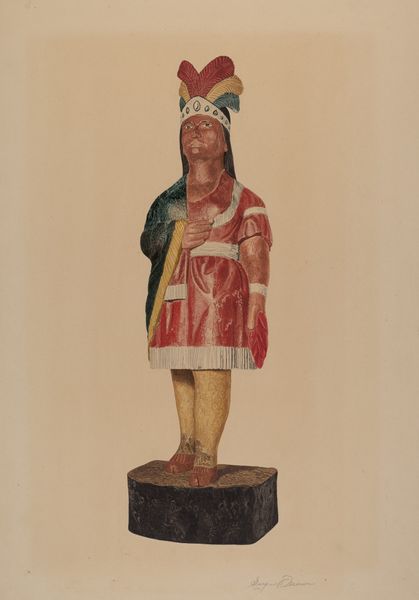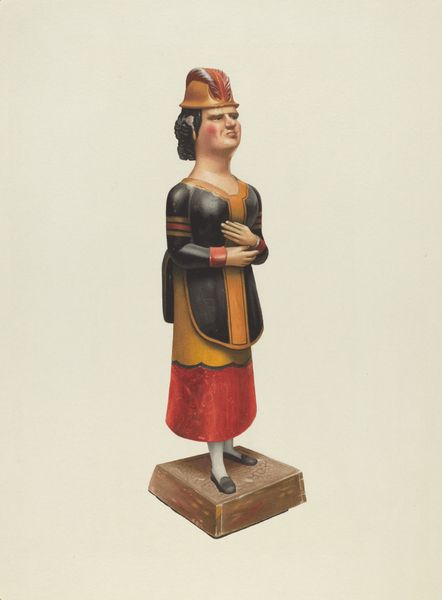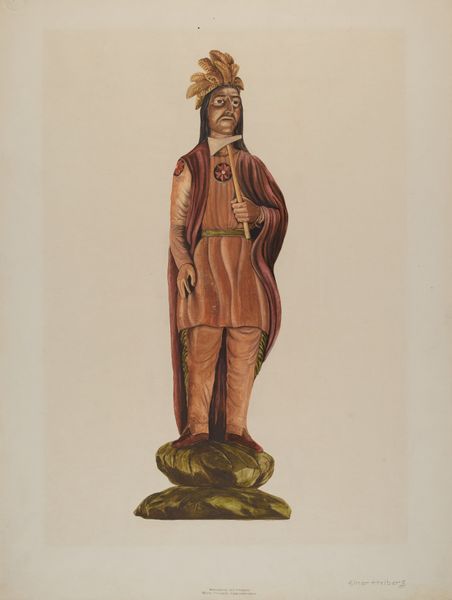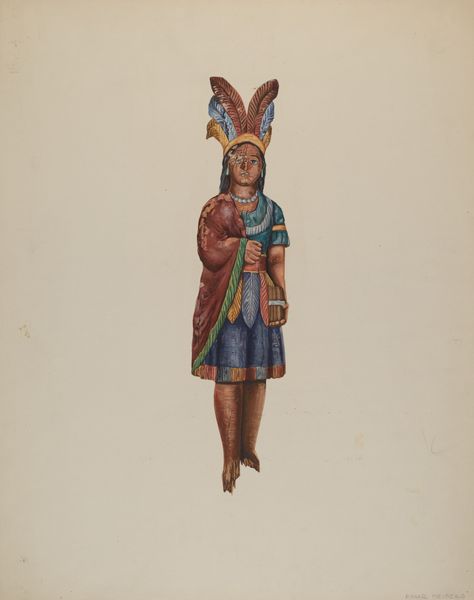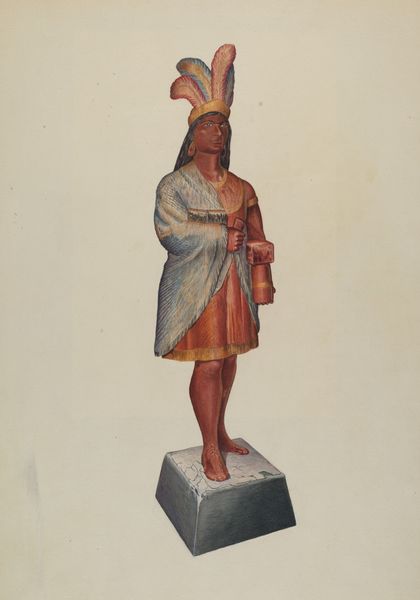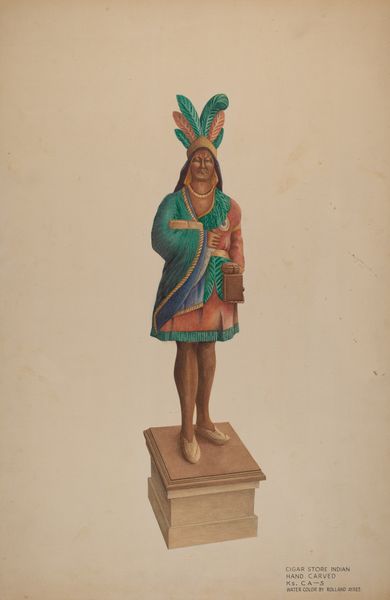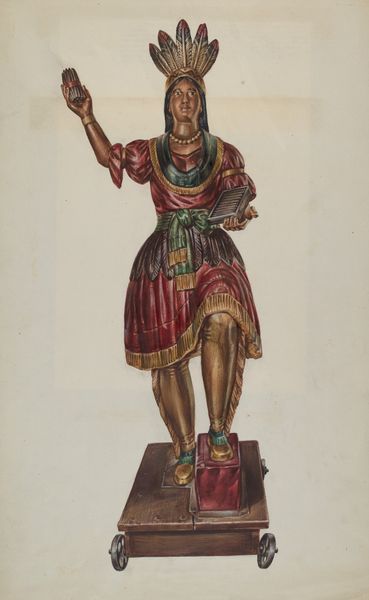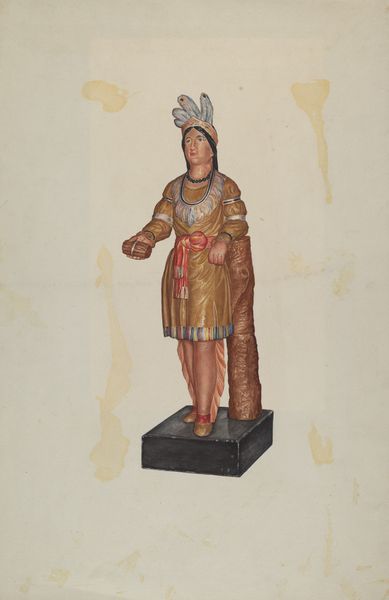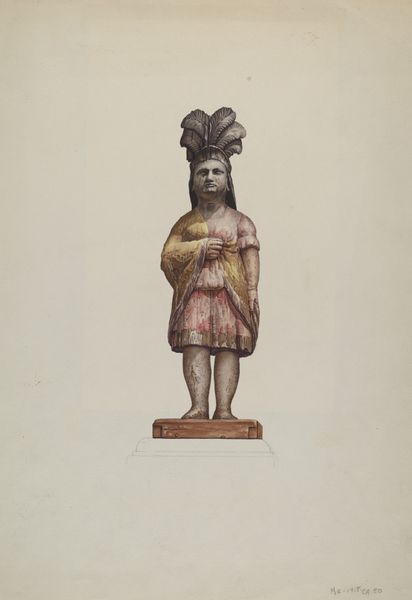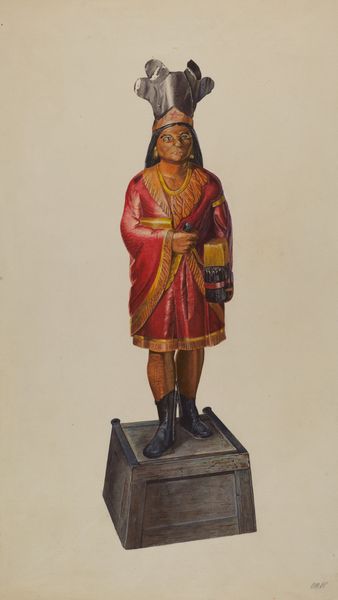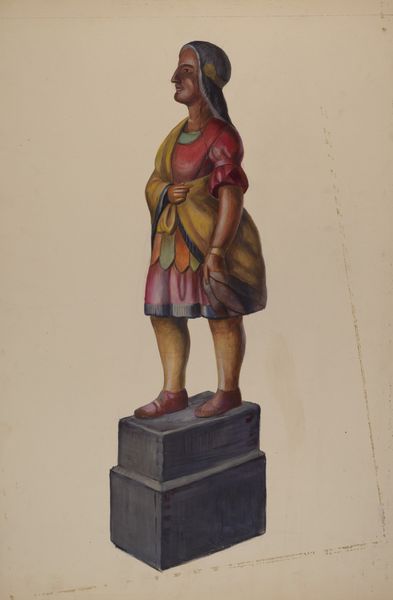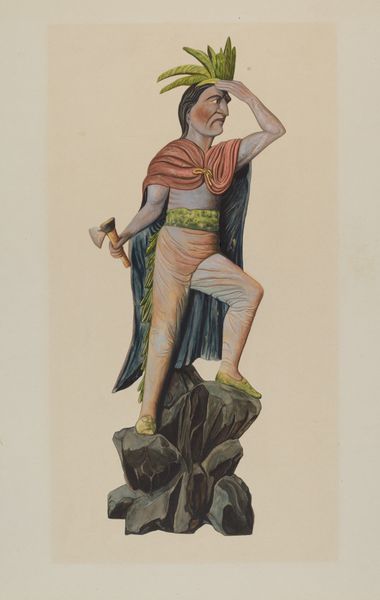
drawing, watercolor
#
portrait
#
drawing
#
charcoal drawing
#
figuration
#
oil painting
#
watercolor
#
coloured pencil
#
folk-art
#
portrait drawing
#
regionalism
Dimensions: overall: 56.3 x 41.9 cm (22 3/16 x 16 1/2 in.)
Copyright: National Gallery of Art: CC0 1.0
Editor: Here we have Hardin Walsh’s “Cigar Store Indian,” created around 1941, using watercolor. I’m struck by how this seemingly simple depiction holds such complexity in its texture. What do you make of it? Curator: Immediately, the piece declares its engagement with formal structures. Note the interplay between the rigidity of the figure and the fluidity of the watercolor medium itself. This contrast serves not merely as visual information but as a discourse on representation. The colour palette, while subdued, offers a clear study in contrasts—how do you see those colours working together? Editor: The earthy tones create a sense of grounding, yet the pops of brighter colours in the skirt bring an element of vibrancy that counters any sense of monotony. Does this relate to regionalism? Curator: Regionalism as a label often overshadows the careful structuring present within the art itself. Consider the way the lines define form. Are they suggestive of depth, or do they assert the flatness of the picture plane? Notice, too, the way the figure's gaze interacts– or doesn't interact– with the viewer. Editor: Now that you mention it, I see that tension between depth and flatness. Also, I find it compelling how the statue makes no connection with the viewer. Curator: Indeed, Walsh utilizes the formal elements to investigate deeper issues around visibility and objectification. The work’s potency lies precisely in the delicate orchestration of colour, form, and line, creating a composition which prompts contemplation far beyond the easily consumed image. What have you observed from studying the forms so closely? Editor: By shifting the focus to form, I'm learning to detach assumptions and truly see. Curator: Precisely. Art demands that we first look closely. Then, we think critically.
Comments
No comments
Be the first to comment and join the conversation on the ultimate creative platform.
